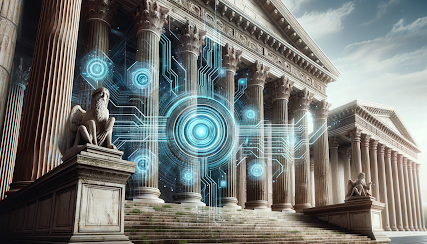New Bots on the Block: The Dawn of Humanoids in Construction
In the construction world, the rise of robots is becoming increasingly significant. Not only are they being incorporated to enhance productivity and efficiency, but they also bring safety to workers and integrate processes in construction management. The use of semi-automatic robots for tasks such as bricklaying is already observable, with one model capable of laying thousands of bricks a day. Moreover, the world's first wall painting robot promises to be ten times faster and much more precise, potentially reducing labor costs in painting by up to 80%.
Looking ahead, the Chinese government has unveiled ambitious plans to mass-produce humanoid robots by 2025, with predictions that these machines will be as disruptive as smartphones, set to "reshape the world". These robots are expected to reach an advanced level and become as transformative as computers, smartphones, and vehicles powered by new types of energy. Chinese companies, like Fourier Intelligence, are gearing up to mass-produce humanoid robots that can move and carry significant loads. In the West, companies like Agility Robotics and Tesla are also developing humanoid robots, though the path to mass production is longer.
These advancements point to a future where civil constructions might be accompanied by a digital progress bar, with humanoid robots inspired by Tesla Optimus or Boston Dynamics' Atlas, working in an integrated fashion. The concept of robot workers interacting in the construction of a residence is no longer mere science fiction. With AI-generated Building Information Modeling (BIM), efficiency and precision could be maximized while minimizing waste. These humanoids could be equipped with laser measuring, cutting, and finishing tools, performing tasks with extreme precision and cleanliness. Construction coordination by AI could optimize schedules to avoid delays due to adverse weather conditions, reinforcing the vision of an increasingly technological and automated construction sector.
Imagine a construction site of the future, where humanoid robots, with a design inspired by Tesla Optimus or Atlas from Boston Dynamics, move and collaborate with almost orchestral precision. Capable of executing tasks like laying blocks, pouring concrete for columns, installing flooring and tiles, performing complete paintings, and installing glass – all with impeccable alignment and no waste of materials, following a detailed AI-generated BIM model.
These robot teams could be capable of self-repair, correcting each other's faults, maximizing construction efficiency. Picture a truck transporting dozens of humanoid workers stacked on pallets that unfold and spring into action automatically, also serving as charging stations. When a humanoid needs recharging, another takes its place in the sequence, ensuring a continuous workflow.
Equipped with high-precision laser measuring and cutting tools, these robots work with a level of accuracy surpassing human capabilities. The construction coordination is done by AI, which optimizes the schedule by interacting with meteorological data to program tasks in a way that avoids delays caused by adverse weather conditions.
With this vision, we can anticipate a future where construction resembles the download of software, with a digital progress bar displaying the evolution of the work in real time. A synergy between technological innovation and construction efficiency promises to not only revolutionize the construction process but also the role of workers in this new paradigm.
As we stand on the brink of such a transformative era in construction, it's not just the skyline that's changing, but the very fabric of how we build. I invite you to share your thoughts on this impending future. How do you see the role of human workers evolving in this new automated landscape? Are there particular aspects of this technological revolution that excite or concern you? Join the conversation below and let's discuss the future of construction and the ripple effects it may have on our society.
Credit: DALL·E 3 A futuristic construction site where humanoid robots are actively working. The robots should resemble the designs of Tesla Optimus and Boston Dynamics' Atlas, moving with precision on a building project. They should be shown laying bricks, painting walls, and carrying materials, following a detailed AI-generated Building Information Modeling (BIM) plan displayed on a screen. The scene should be bright and busy, reflecting a high-tech and efficient atmosphere, with a clear sky in the background, suggesting an optimistic and advanced future of construction technology.



Comments
Post a Comment